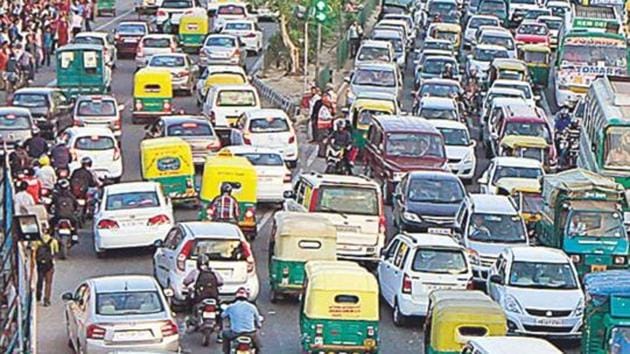Improved inspection and maintenance for vehicles will make our air breathable
Studies have shown that around 60% of vehicular air pollution in India can be attributed to 20% of vehicles, the ones that are poorly-maintained or, simply, old.
Ninety percent of the world’s population breathes polluted air. Seven million people die due to air pollution every year and most of these deaths occur in developing countries. India has 14 of the 15 most polluted cities in the world. As winter sets in, the national capital gets blanketed by severely polluted air that chokes its lungs every year. While there are multiple sources including biomass burning, industries, power plants and agriculture residue burning that are responsible for the deteriorating air quality, the transport sector is among the biggest contributors to air pollution.

With a 28% share in Delhi’s particulate matter (PM2.5) concentration during winters, the transport sector also provides a huge scope to introduce targeted interventions to curb air pollution. While the government has tightened emission norms and introduced cleaner fuels, the expected results have not been observed in the city’s air quality. Studies have shown that around 60% of vehicular air pollution in India can be attributed to 20% of vehicles, the ones that are poorly-maintained or, simply, old. In the absence of an effective inspection and maintenance (I&M) system, on-road reduction in emissions cannot be ensured even with the introduction of cleaner fuels.
The current I&M system in India comprises a mandatory periodic pollution under control (PUC) certification for all types of vehicles, and annual fitness certification for commercial vehicles. In the current PUC certification, gasoline/CNG/LPG vehicles are tested for carbon monoxide and hydrocarbon emissions and lambda value (the ideal condition needed for effective functioning of catalytic converters), and diesel vehicles are tested for Hartridge Smoke Unit (HSU) which is used as a proxy for particle measurement. With the advancement in emission norms, new engines emit less particulate matter compared to older ones. This calls for newer technologies for accurate measurement. Moreover, in the current I&M system, gasoline/LPG/CNG vehicles are tested on idle speed testing mode and diesel vehicles are tested on free acceleration mode (FAS). These modes do not represent real world driving cycles and mass emissions released during real conditions. Despite the provision of heavy penalties, in 2014, merely 21% of vehicles appeared for PUC testing. This low appearance rate indicates that the I&M system only captures a small proportion of in-use vehicles, and most of the vehicles are running without PUC, possibly with higher emissions than prescribed standards. Moreover, the vehicles that appear for testing do not ensure compliance with the prescribed norms due to manual interference. This could lead to fewer failures being reported despite higher emissions.
There are multiple steps that can be taken to improve the current I&M system in the country. First, the HSU-based testing of diesel vehicles can be replaced with improved laser light scattering photometry for accurate measurement. Second, the PUC standards for different parameters should be tightened and annual audits and verification of existing PUC centres conducted to phase out the non-compliant ones. Third, the on-board diagnostic system (OBD) should be made a part of the formal PUC testing in India. The OBD system is mandatory for all diesel vehicles and passenger cars manufactured after April, 2013. It monitors the potential areas in a vehicle which can influence emission. A false code is generated and stored in the OBD in case of malfunctioning of any component in the vehicle. This information can later be used by PUC centres to check the road worthiness of a vehicle. The standards to assess the OBD data set for desired performance of vehicles need to be developed. Moreover, the existing PUC centres should be equipped with the capacity to collect and analyse OBD data sets. Finally, the vehicles failing the OBD testing should be sent to the advanced centres, such as those in Nasik and Manesar, where they can be tested for road worthiness. The vehicles in these advanced centres are tested for PUC along with other safety parameters such as brakes, headlight and speed etc.
To summarise, the cities in India require three kinds of testing centres.
i) Traditional centres for vehicles without OBD; ii) Centres for vehicles fitted with OBD; and iii) Advanced centres for vehicles that fail the OBD test.
A targeted intervention in the form of improved inspection and maintenance system for in-use vehicles will not only curb emission but also enhance and maintain air quality throughout the year.
Anju Goel is a fellow with the Centre for environmental studies, The Energy and Resources Institute, New Delhi . This article is co-authored by Jai Kishan Malik, Research Associate, TERI.
The views expressed are personal






